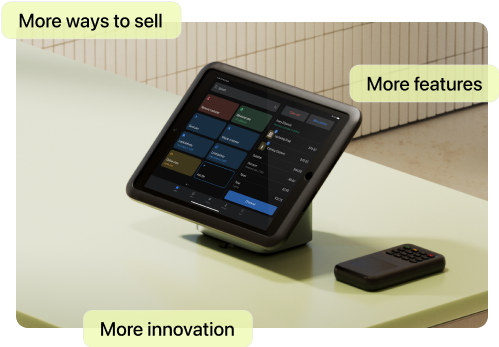Your ecommerce website is more than just a storefront—it’s your brand’s home address on the internet. Just like you wouldn’t open a physical shop without clear signage, you shouldn’t launch your business without a memorable domain name that customers can easily find and remember.
A custom domain name does more than look professional on a business card—it builds credibility, boosts brand recognition, and makes it significantly easier for customers to find you online. Think of it as the difference between having a prime location on Main Street versus being tucked away in an unmarked alley.
Learn about custom domain names, how they differ from generic options, and how you can find and secure the perfect domain that fits your brand.
What is a custom domain?
A custom domain is a web address or URL on the internet that utilizes a brand name, rather than one that merely describes what the site provides or the ecommerce store sells. Nike.com, Amazon.com, or Shopify.com are a few famous examples. It signals ownership—this digital space belongs to your brand, it’s not something generic that could belong to any site.
Custom domain names are brand-specific, which means they’re not always obvious about what you’re selling. Take the audio company Grado Labs (gradolabs.com), for example. Nothing in the name immediately tells you it makes audio products. That’s why it’s invested heavily in branding to make its company name—and custom domain—synonymous with high-grade audio equipment.
While a custom domain isn’t technically a ranking factor for search engines, it indirectly contributes to search engine optimization (SEO). The professional credibility that comes with a custom domain improves user trust, which benefits your search rankings.
What is a generic domain?
Custom domains aren’t your only option. You can also choose a generic domain name, made from non-brand-specific words that describe the type of products or services you offer, like “rarebooks,” “scarysouvenirs,” or “riverboatcruises.” They name what the business sells.
A generic domain might seem like the safer choice for a small business with little brand recognition, and sometimes it is. However, the best generic names are often already taken and prohibitively expensive. By contrast, a brand-specific custom domain puts you in a strong position to build professionalism, establish trust, and make your site easier to find in Googlesearch results.
Savvy startup businesses often combine both approaches, creating a name that features a unique brand combined with descriptive words.
What is a subdomain?
A subdomain attaches to an existing custom domain, often used by hosting providers like WordPress, Wix, and Shopify. If you have a store on Shopify with the address yourstorename.myshopify.com, the “yourstorename” part of the URL structure is your subdomain. It’s one of many subdomains on MyShopify and signals that you haven’t purchased your own custom domain name yet.
Custom vs. generic domain name examples
To illustrate the differences between custom and generic domain names—and show how you can combine the best of both approaches—here are some real-world examples:
Gymshark
Gymshark.com has a custom domain name that still immediately speaks to the brand’s identity: selling athletic wear. The shark conveys aggression and competitive edge, while combining two words suggests this is a website for getting in shape and staying ahead. The name is short, crisp, and easy to recall.
However, someone unfamiliar with the brand might wonder whether Gymshark sells gym apparel or equipment. If they wanted a generic name, they might have chosen gymclothes.com—but it was more important for them to make their custom domain and brand name synonymous with athletic wear.
That’s why building a strong social media presence and developing an effective marketing strategy—as Gymshark has done—is essential to clear up any confusion a custom domain might create.
Huel
Some of the best custom domains say the most with the least. Huel.com takes the words “human” and “fuel” and fuses them into an original brand name. It’s about as concise as a custom domain can be, yet perfectly matches their business proposition: nutritionally complete meals for humans.
For this custom domain to be effective, Huel launched an extensive marketing campaign over several years to define who they are and what they provide. Now, people instinctively know to type huel.com when they want meal replacement drinks rather than searching for something like mealreplacementdrinks.com.
Headphones.com
There’s still significant value in building a brand arounda generic domain name. Headphones.com is a great example.
The founder, Andrew Lissimore, acquired this domain because it instantly suggested credibility and authority in the audiophile market—qualities his startup initially lacked. The generic domain made it easier to attract vendors and customers from day one because the name clearly communicated what the business sold.
The tricky part was the steep cost. On an episode of the Shopify Masters podcast, Andrew explains how he got creative about financing the name acquisition: “In the back of my mind, I knew that I couldn’t afford the domain. There’s no way I had enough money [a million dollars]. We spent four months going back and forth and negotiating—and we made a deal for the domain. It was very expensive, but I was able to get it tied to the business, basically. So we were just paying for it monthly, and then as the business grew, our payments would grow.”
How to get a custom domain name for your website
- Pick a brand name
- Check that it’s available
- Pick a domain registrar
- Register the custom domain name
- Attach the name to your website platform
- Verify the changes and wait
Here’s a step-by-step guide to naming, acquiring, and linking to your custom web address:
Pick a brand name
Your custom domain starts with a strong brand name. This isn’t just about being catchy—it’s about being clear, memorable, and aligned with what your business stands for.
A strong brand name helps build recognition, trust, and recall, all of which translate into customer loyalty and SEO traction over time. Consider what makes your business different and how your name could signal what you provide in a memorable way.
If you already have a business name, ensure it’s distinct and not easily confused with competitors. If you’re still brainstorming, focus on names that are short, easy to pronounce, and easy to spell. The fewer hurdles someone has to clear to remember or type your name, the better.
Check that it’s available
Once you’ve narrowed down your top choices, check availability. This is where creative branding meets practical reality—your dream name won’t help if the domain is already taken or trademarked. You can use tools like Shopify’s free Domain Name Generator to quickly check if your desired domain is available and get suggestions for alternatives if your first choice is taken.
Pick a domain registrar
Next, find a domain registrar where you can register your custom domain. A third-party domain registrar is a company that sells and manages domain names. Popular registrars include Shopify, GoDaddy, and Squarespace. Choose one with a strong reputation, transparent pricing, and user-friendly signup and management tools.
Register the custom domain name
After determining your custom domain cost, register your desired domain name. Add the domain to your cart and complete the checkout process. Decide on a payment period, like annual or multi-year renewals. Think of it as leasing prime digital real estate for your business.
Attach the name to your website platform
Once you’ve purchased the domain, point it to your actual website. This tells the internet where your site lives so visitors can access it properly. If you bought your domain directly through your website platform—like Shopify—this connection usually happens automatically.
Third-party registrars provide instructions for linking your domain to your website. Usually, this involves accessing your hosting platform’s admin settings and updating the DNS records with information provided by your registrar.
Verify the changes and wait
Changes can take anywhere from a few minutes to 48 hours to fully spread across the internet. Once the changes have propagated completely, you can type the new custom domain name into any web browser and confirm it works as expected.
How to choose the best custom domain name
- Keep it short and sweet
- Be unique and descriptive
- Grab a dot com if you can
- Avoid numbers, dashes, and weird spellings
- Prepare for workarounds
There’s an art to choosing the best custom domain name within the limited pool of available options. Here are the best practices for ecommerce domain names:
Keep it short and sweet
Shorter names are easier to remember and type, and less prone to spelling errors. All of this enhances discoverability, looks cleaner, and makes marketing easier. Aim to keep your domain under 15 characters.
Be unique and descriptive
A unique name stands apart from competitors and sticks in customers’ minds. It should also give visitors a sense of what your business offers. If the name is too abstract, customers struggle to understand what products and services you provide.
The sweet spot is a balanced blend of distinction and description—unique enough to be memorable, informative enough to be helpful. Ideally, this discussion happens during your startup phase and flows naturally from your brand name.
Grab a dot com if you can
The .com extension remains the most recognizable and trusted top-level domain (TLD) around the world. Most users assume ecommerce websites end in .com, so you’ll meet their expectations with this extension.
A different extension may cause confusion. If your preferred .com is taken, switch to an obvious alternative like .shop, which instantly tells users they can buy things at your website.
Avoid numbers, dashes, and weird spellings
Numbers, hyphens, and special characters are hard to remember and spell. Creative spellings cause confusion and lead to typing errors. Compare "greatcruises" to "gr8cruises"—which is easier to spell, more professional, and less error-prone? You get the idea.
Prepare for workarounds
Your ideal custom domain name might already be taken. Here are your options:
- Buy it from the current owner. If the domain is for sale, you could invest in purchasing it. Be warned—the fee might be prohibitive, or the current owner may not be interested in selling regardless of your offer.
- Get creative with additions. Add a descriptive word or verb to create something unique. For example, if fishwife.com is taken, you could use eatfishwife.com. This creates a new brand name while describing what customers do with your products.
- Choose a different domain extension. When .com domains are unavailable, pick a niche-specific extension relevant to your business, like .store or .shop. Just ensure the resulting name is truly unique and won’t be confused with the .com version.
What is a custom domain FAQ
What is a custom domain used for?
A custom domain is a unique website address used for building brand recognition. By purchasing a custom domain, website owners can express a distinctive, professional brand identity customers can easily remember.
Is it worth having a custom domain?
Investing in a custom domain is worthwhile for any ecommerce store seeking credibility and memorability. A custom domain stakes your claim online and distinguishes your brand from competitors.
What is the difference between a custom domain and a free domain?
A custom domain is a unique web address that you own and pay for, while a free domain doesn’t really belong to you. Free domains are generic addresses provided by hosting platforms, usually in the form of your store name as a subdomain, like https://yourstorebrand.hostplatform.com.







